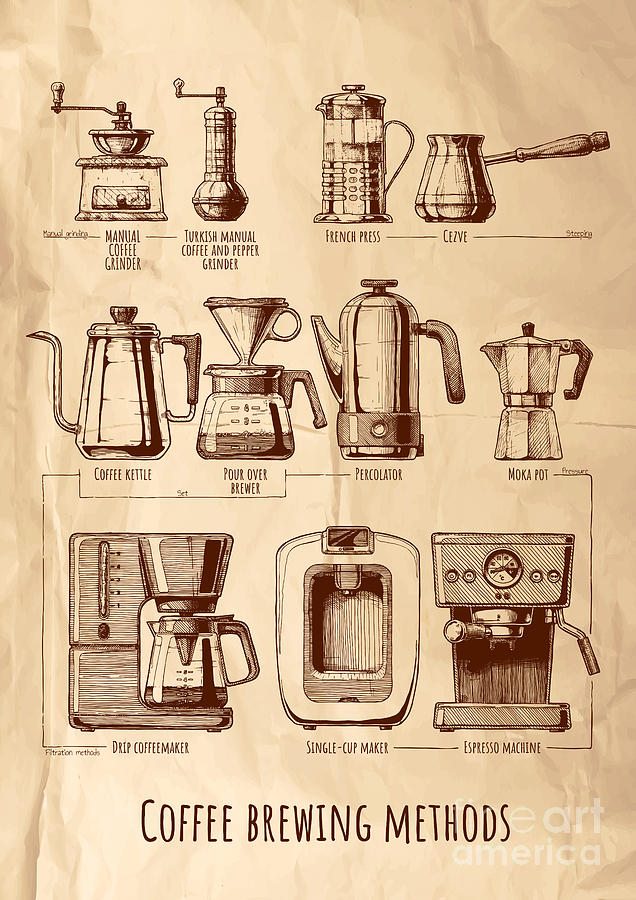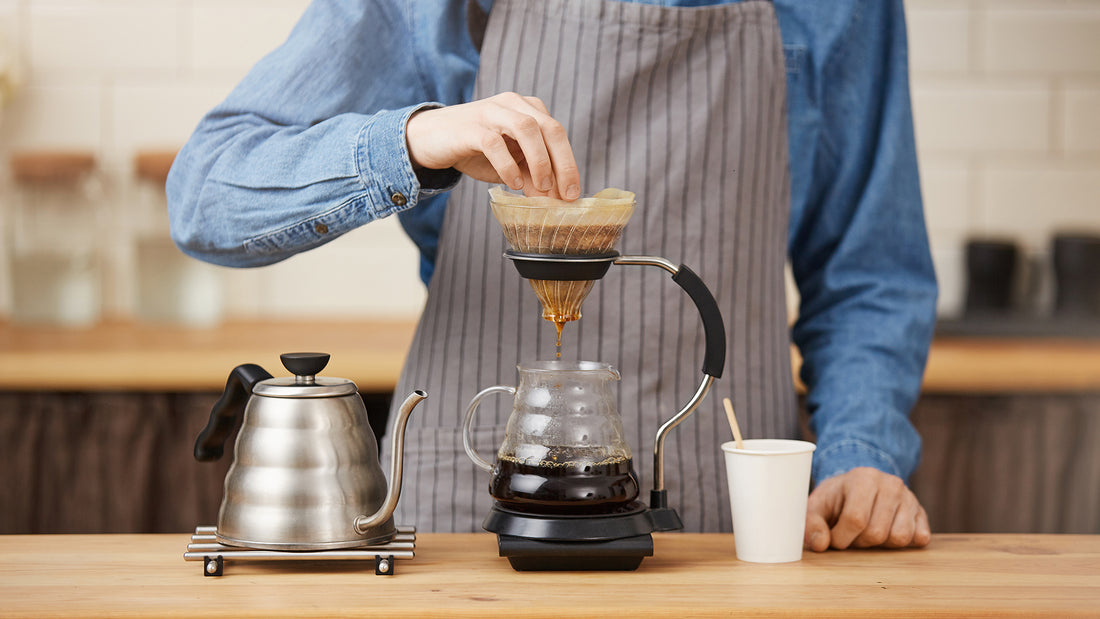Introducing the Scientific Research Behind Different Coffee Brewing Methods and Their Advantages
Introducing the Scientific Research Behind Different Coffee Brewing Methods and Their Advantages
Blog Article
The Science Behind Coffee Developing: Exactly How Temperature Level and Time Affect Your Beverage
Recognizing the science behind coffee brewing discloses that temperature and time are not plain variables but essential aspects that determine the beverage's flavor account and overall quality. As we explore the nuances of these aspects, the question arises: exactly how can one efficiently equilibrium temperature level and time to attain that excellent mixture?
The Chemistry of Coffee Extraction
The chemistry of coffee extraction explores the elaborate procedures that change raw coffee beans into the fragrant beverage delighted in worldwide. This change primarily entails the solubility of various compounds present in the beans, which are affected by variables such as work dimension, water high quality, and the brewing approach employed.
Throughout the brewing process, warm water acts as a solvent, removing soluble compounds, consisting of high levels of caffeine, acids, lipids, and sugars, from the coffee premises. Each compound adds to the flavor profile, scent, and body of the last drink. For example, acids are accountable for bright and zesty notes, while oils contribute to an abundant mouthfeel.
The preliminary stages of brewing extract acids and sugars, leading to an enjoyable acidity, while prolonged extraction can lead to anger due to over-extraction of unfavorable substances. Comprehending these chemical communications is crucial for optimizing brewing strategies, as the equilibrium between removal time and water temperature can substantially influence the total high quality of the coffee.
Ideal Developing Temperatures
Finding the right developing temperature level is necessary for opening the full potential of coffee tastes and scents - coffee brewing methods. Research indicates that the optimum variety for brewing coffee exists between 195 ° F to 205 ° F(90 ° C to 96 ° C) Within this range, the removal process effectively liquifies the desirable soluble substances in coffee beans, causing a savory and balanced mug
Brewing at lower temperature levels, such as below 195 ° F(90 ° C ), might cause under-extraction, producing a weak and acidic mixture with muted tastes. On the other hand, brewing at temperature levels exceeding 205 ° F(96 ° C) can bring about over-extraction, creating a bitter and harsh taste because of the excessive dissolution of unwanted compounds, such as tannins.
Additionally, the optimal developing temperature can differ depending on the coffee bean kind and roast level. For circumstances, lighter roasts frequently profit from slightly higher temperature levels to enhance their complicated taste profiles, while darker roasts might be much better suited to lower temperature levels to mitigate resentment.
Ultimately, keeping precision in developing temperature levels is crucial for attaining an unified equilibrium of tastes, making sure that every cup of coffee supplies a satisfying sensory experience.
Effect of Brewing Time
Developing time plays an essential function in determining the flavor profile and total top quality of coffee. Shorter developing times can result in under-extraction, leading to a weak or sour flavor, as not enough soluble substances are dissolved.
Optimal developing time varies depending on the approach made use of and the grind size of the coffee. As an example, a French press normally needs about 4 minutes, while coffee removal is generally finished within 25 to 30 seconds. It is important to adjust brewing time in combination with other variables, such as water temperature level and coffee-to-water ratio, to accomplish the desired taste profile.
Recognizing the impact of developing time enables coffee fanatics to refine their developing techniques, eventually enhancing the sensory experience of their cup (coffee brewing methods). With mindful interest visit this website to this variable, one can open the full capacity of the coffee, revealing its distinct characteristics and nuances
Developing Methods and Their Impacts

For instance, methods like French press and cold brew permit a longer steeping time, causing a fuller body and durable flavor due to raised extraction of oils and soluble solids. Alternatively, coffee brewing utilizes high pressure and a shorter extraction time, creating a concentrated shot that highlights extreme flavors and a rich crema.
Pour-over methods, such as Chemex or V60, use an even more regulated extraction process, enabling the brewer to manipulate flow rate and water distribution, which can enhance illumination and clarity. Percolation techniques cycle water via great post to read the coffee premises several times, leading to a more powerful, commonly bitter flavor.
Lastly, the use of paper filters versus steel filters can additionally affect the final taste; paper filters typically produce a cleaner mug by trapping oils and fine fragments, while metal filters allow even more oils to travel through, adding to a fuller mouthfeel - coffee brewing methods. click this site Comprehending these nuances can boost the coffee experience substantially
Tips for Refining Your Brew
A well-executed mixture can transform also the simplest coffee right into an amazing experience. Grind the beans simply before making to make best use of freshness, guaranteeing the work size matches your developing approach-- coarser for French press and finer for espresso.
Water top quality plays a crucial duty; use filteringed system water devoid of impurities. The suitable developing temperature varies in between 195 ° F and 205 ° F(90 ° C to 96 ° C ) Too warm can scorch the coffee, while as well cool may under-extract tastes.
Timing is just as essential. For immersion approaches, soaking for three to five mins is optimum, whereas drip methods commonly take around five minutes. Trying out mixture times to find your favored toughness.

Verdict
In summary, the detailed connection in between temperature level and time is critical in the coffee brewing process. Comprehending these scientific principles encourages individuals to improve their developing techniques, eventually leading to an extra delightful and balanced coffee experience.
Recognizing the scientific research behind coffee brewing discloses that temperature and time are not mere variables yet essential elements that determine the beverage's taste account and overall top quality. Comprehending these chemical interactions is critical for enhancing brewing methods, as the equilibrium between removal time and water temperature can significantly affect the overall high quality of the coffee.Developing time plays an essential duty in figuring out the flavor profile and total quality of coffee. By concentrating on these elements-- bean high quality, grind dimension, water temperature level, steeping time, and proportion-- you can elevate your coffee brewing procedure, resulting in a consistently remarkable cup.
In summary, the complex connection in between temperature and time is vital in the coffee developing process.
Report this page